Book Reviews
Fiction
- All Fiction
- Adventure
- African American
- Chapter Books
- Chick Lit
- Christian
- Classics
- Contemporary
- Diversity
- Dystopian
- Erotica
- Fantasy
- Graphic Novels/Manga
- Historical
- Horror
- Humor
- LGBTQ
- Literature
- Medieval
- Mystery
- Mythology
- Native American
- Other Fiction
- Paranormal/Supernatural
- Picture Books
- Realistic
- Reluctant Readers
- Retold Fairytales
- Romance
- Science Fiction
- Short Stories
- Sports
- Thrillers/Suspense
- Time Travel
- Western
Nonfiction
Want to submit a book review? Submit your book review today.
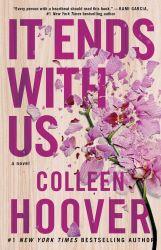
"It Ends With Us" by Colleen Hoover is a real and effective novel that explores the story of Lily Blossom and Ryle Kincaid. This book very evidently gives off the message, that it is okay to not be normal. To be scared to make tough choices. I think of this book as Hoover's courageous attempt in relation to her personal life to share awareness about abuse and harassment. I believe reading this novel will help change many lives that have been held under similar circumstances. This narrative will help teach people that sometimes, moving on or letting go is the best decision you can make for yourself. I felt proud when Lily was able to make extremely hard life-changing decisions to prioritize herself and her happiness. She is a character to admire and love. Hoover has derived so many layers to each character which adds depth to the story as a whole. Colleen Hoover’s subject is heartbreaking, but in our lives, it’s become such an ordinary deal that we naturally begin to avert our eyes easily from such content.
Love has no boundaries, but your health does. Real love should not end in excruciating pain. Taking your chances will only result in you getting used to the affliction.

Who knew history could be so ironic? It’s 1978, and the Ku Klux Klan is on the rise in the community of Colorado Springs. Ron Stallsworth, the first African-American detective in the Colorado Springs Police Department, launches an undercover investigation with the mission to thwart the Ku Klux Klan’s infiltration into Colorado Springs. Ron Stallsworth can only communicate via the telephone, so he recruits the “white” Ron Stallsworth, Chuck, to conduct all face-to-face meetings. This creates the perfect breeding ground for irony, insanity, and idiocy.
Out of the pure insanity of the circumstances and the idiocy of the Colorado Ku Klux Klan, this book had me uncontrollably laughing. While the writing style leaves much to be desired, the narrative more than bridges the gap. The BlackKlansmen is a wonderful memoir about standing up to terrorism and hate.
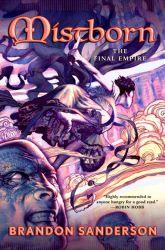
A high-stakes fantasy book about love and sacrifice, Mistborn is absolutely outstanding and a definite read for people who love fantasy. As with any excellent fantasy book, the worldbuilding is enthralling, and the magic system is incredibly distinctive yet easy to grasp. The characters are complex, relatable, and flawed, complemented by the third-person omniscient narration. With this cast of characters, the reader will be taken on multiple emotional rollercoasters before the book concludes. And yes, of course, there is romance layered on evenly throughout the narrative. While it does follow a typical plot, a revolution, or overthrow the corrupt leader, it is done uniquely, and there are twists, and there are turns. Honesty, I could not predict the ending and was left gaping on how intense the book got within the last quarter. As I said, I one hundred percent recommend Mistborn. It is an unforgettable read.

"All Your Perfects" by Colleen Hoover is a deep, emotional novel that delves into the complexities of marriage and the impact it has on the physical and emotional well-being of its characters. The story primarily revolves around Quinn and Graham, a couple who were once so deeply in love but find their relationship strained by the challenges of infertility, putting their marriage to the test. Colleen Hoover's narrative represents a tale of love, loss, and resilience, exploring the ups and downs of this couple's journey.
I give "All Your Perfects" a solid 4-star rating because the book shines in its depiction of the many struggles people face in maintaining a healthy, thriving marriage. I love how it addresses the issue of infertility, shedding light on how it can strain even the most loving relationships. This novel also doesn't shy away from the emotional toll this takes on the characters, which makes it a relatable and thought-provoking read for those who have faced similar challenges. Hoover's writing is very engaging, and she masterfully captures the depth of the emotional agitation that couples may tend to experience when dealing with such issues. This novel clearly excels in its portrayal of human vulnerability and the strength it takes to navigate the complexities of love and marriage, making it a compelling read.
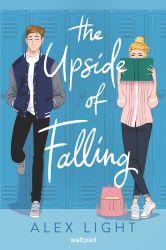
In "The Upside of Falling" by Alex Light, readers are treated to a heartwarming and charming YA contemporary novel. This story revolves around Becca Hart, a high school student who, in an unexpected turn of fate, fake-dates Brett Wells, the most popular boy in school. Although the trope and theme may sound familiar, Light's storytelling immerses it with a fresh and engaging twist. Becca and Brett's journey through the ups and downs of their "pretend" romance is filled with humor, relatable characters, and a delightful exploration of the complexities of high school relationships.
I give "The Upside of Falling" four stars for its simplicity, like a cute, short Wattpad (where it was originally published) story. Alex Light's writing style is refreshingly light and accessible, making it an delightful read for fans of YA romance. The story's direct and endearing approach to love and self-discovery is very enjoyable, and the characters are relatable and easy to root for. This book's likable and uncomplicated narrative is suggestive of the online stories many readers adore, making it a perfect choice for those seeking a sweet and heartwarming escape into the world of high school romance.
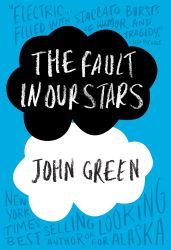
John Green's "The Fault in Our Stars" is a heartwarming and pleasant YA novel that explores a variety of themes like love, illness, and essence. This particular story follows the narrative of Hazel and Augustus, two teenagers who battle cancer and embark on a journey of love and self-discovery together.
I rate "The Fault in Our Stars" 3 out of 5 stars for its easy readability, enjoyable narrative, and the extremely important message it conveys about cancer awareness through Hazel's and Augustus' characters. It is an incredibly nice, short book to read, particularly for audiences who are young adults. However, compared to some of the other books I've read, it doesn't delve as deeply and lacks the complex storytelling that I often seek while reading. While it certainly has its lovely positives that I enjoyed, the book, in my opinion, falls a little short in terms of depth and construction, which is why I choose to give it a 3-star rating.
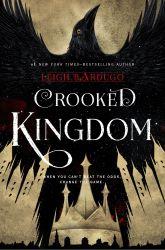
Crooked Kingdom is a sequel to Six of Crows, both of which are set in the Grishaverse. It is the story of how Kaz Brekker and his crew as they try to con Jan Van Eck out of his money before he builds an empire with the deadly substance, parem.
As with the last book, the characters are the standouts. Every member of the cast is fleshed out, and you can understand every decision they make. Jesper, Matthias, and Wylan are the standouts in this book. Each of them continue on their arcs in a natural way that leaves their characters feeling complete. Jesper realizes that many of his problems come from hiding his true self as a grisha. Matthias finally sees the beauty in the grisha. Wylan overcomes his father's influence and sees him for what he is.
The plot has constant twists and turns, but is still easy to follow. As the story progresses, the challenges the group faces continually grow more difficult. The characters have to change their plans multiple times to keep up with the growing influence of their adversaries. This story markets itself as a fun fantasy heist, and it more than succeeds in that. It might not say anything particularly meaningful, but it has a few nice messages sprinkled in there.
My main problem with this book is with Inej. Her arc was more or less completed in the last book, and this book doesn't have much for her to do. There's a brief crisis where she believes Kaz only keeps her around because she's useful, but that's resolved rather quickly. She has a rivalry with a character named Dunyasha, but nothing is done with that either. She beats Inej once, then loses the next time they fight. It doesn't make Inej grow or change. It just exists. It might not have bothered me so much if it wasn't built up as this incredible rivalry. I felt that the book wanted her to remain one of the main characters, but had to make up excuses for her to still be in the spotlight.
However, that one critique is rather small. Overall, Crooked Kingdom is a delightfully fun book. I would recommend it to any Grishaverse fans, fantasy fans, or heist fans.
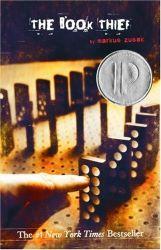
This book was awesome! I had to read it for school, but I ended up really loving it and the way Markus Zusak wrote it. This book takes place in Nazi Germany and follows a young girl named Liesel who loves words and stories but can’t read. The book is interesting because the narrator isn’t Liesel and it isn’t in third person, instead it’s narrated by Death himself. Through Death, we learn about Liesel’s development and the environment she is living through. We watch as she gets older and continues her love for stories and writing. While this story can be heartfelt, the focus still takes place in Nazi Germany where all kinds of tragedies were taking place and made me tear up more than once. This book was amazing but it’s something you have to read slowly because of all the figurative language and metaphors being described at once. You have to think about what Death is telling you and then compare it to Liesel’s story. I loved this book but I was ready to cry by then end of it because of all the events taking place.
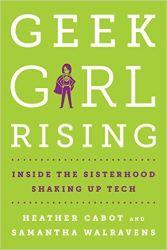
'Geek Girl Rising: Inside the Sisterhood Shaking Up Tech' is a nonfiction book focusing on the women who have taken their place in the tech industry, placing special focus on the women who help empower other women. Each woman is given a snapshot of her successes and story.
The highlight of this books is learning about these impressive women. I can imagine this would be especially empowering for girls who are looking to get into this industry. Over one hundred women are mentioned, and a list of them are included at the end of the book for reference. Furthermore, with this book at the ready, it would be impossible to claim that there aren't sucessful women in tech.
The writing style is quick and snappy, not lingering on any point for too long. It focuses on telling as many stories as possible. However, none of the stories feel empty. Lots of information is fit into small spaces.
My only complaint is that I wished the book had gone more into detail about the challenges women in the industry face. There were brief mentions of sexism in the workplace, but it wasn't discussed much. Though I understand that the point of the book is to inspire, I would have liked a better understanding of why empowerment is so needed in the tech world.
Overall, I would recommend this book to anyone interested in the tech industry or feminism. I would especially recommend it to anyone looking for female role models.
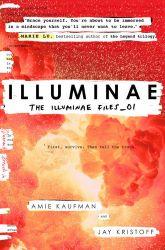
This book was interesting. It takes place in 2575 so way in the future and includes a planet invasion and a plague. It was also written in the transcripts of files and emails, so even though it was a long book it was a quick read. It was slow at the beginning and a little hard to get into because of the different way of writing it, but it eventually got good. I was interested for a while, but then it just got confusing again. I also did not enjoy the main character or the way she acted, her character development just stopped making sense. I’m not sure if I would recommend this book, I think if you want a legit sci-fi novel you should read this, but be prepared to focus try to transcript emails and codes.
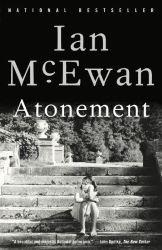
"Atonement" is the story of thirteen year old Briony and her misunderstanding of the world. It begins in the Tallis household in 1935. Obsessed with fantasy and books, she sees sinister motivations in the blossoming romance between her sister and the son of the family's house cleaner. When something terrible happens, Briony makes a mistake that will change the lives of everyone around her.
The characters in this story are all well developed, but Briony is the stand out in this regard. Her motivations straddle the line between clearly defined and mysterious. She has a clearly defined character, dramatic, self centered, and eager to please. Cecilia and Robbie are less defined, but still sympatheic and interesting. I found Robbie slightly unpleasant in the second half of the book, but it was understandable considering the circumstances.
The plot cannot be properly discussed without getting into spoilers. However, it unfolds in a clear manner. All the plot points are set up before they happen, and given proper foreshadowing. At the end, there is a plot twist. Since I highly recommend this book, I will not be spoiling the twist. However, I will say that it makes everything else that happened in the book unclear (in the best possible way).
This book contains a depiction of rape, extreme violence, and rather gruesome hospital scenes. If any of these subjects upset you, I would not recommend this book. If you are able to handle these topics, and you appricate books that focus on pyschology and character exploration, I would definitely recommend this book.

To all the Boys I’ve loved Before is a coming of age novel. Lara Jean Covey writes love letters whenever she has a crush so intense she doesn’t know what else to do. She has five in all, and keeps them all in a blue hatbox for her eyes only. Until by accident someone sends them out and her life spirals out of control
This was an interesting take on love letters as she only wrote them to get over a crush and not to confess her feelings. I enjoyed Lara Jean’s personality throughout the book and liked the supporting characters as they developed. This book is a good focus on grief and letting go as her older sister is off at college and now she’s the woman of the house since her mom died years prior. I feel like I could connect to Lara Jean a lot as she is scared to try new things and makes a realistic approach on growing up.
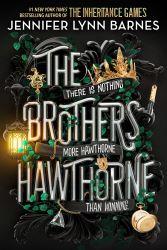
The Brothers Hawthorne is an extension of the Inheritance Games trilogy about the brothers Grayson and Jameson. After the events of the main series, Jameson gets a call from his biological father to break in to an infamous casino in London. Grayson on the other hand, gets called to Phoenix to break his half sister out of jail and prevent her from and her twin sister, from gaining valuable information.
This book was very good! The inheritance games is an amazing series, but it was so interesting to hear the brothers’ point of views and their own adventures. This book brings back old mysteries and unanswered questions from the final book of the inheritance games series that I totally forgot about! Jennifer Lynn Barnes is also writing another book that will take place after this one bringing a new story and mystery. The brothers were very funny in this book and it was so much fun to read it from their perspective! If you liked the inheritance games is this absolutely a book you should read!
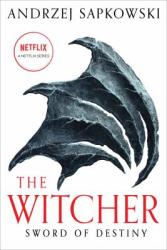
In the second collection of short stories that start the Witcher saga, Sword of Destiny helps to further broaden the setting and characters that would eventually be used in Blood of Elves . Following somewhat chronologically and expanding upon ideas first covered in The Last Wish , this collection continues to flesh out characters like Geralt and Yennifer while also introducing characters like Ciri. While they're fine stories by themselves, they pale in comparison to long-form novels like Blood of Elves, mainly because of their episodic nature.
I applaud author Andrzej Sapkowski for using these short stories to introduce the world-building of the Witcher series. While some writers might just make character sheets for their characters, he actually puts them in interesting situations to see what they would do. From a writing standpoint, I'd recommend this method of concept development as it gives certain edge cases or rarer character interactions to see where the limits of the characters lie. After all, figuring out what works in short form helps the longer pieces feel grounded. It helps when there are such strong characters to work with, though.
My only qualm with this collection was that nothing was particularly memorable. Sure, if I had read this before Blood of Elves, I might feel differently. As it is, I already know how Geralt handles himself, what drives Yennifer, and how Ciri has more going for her than even she knows. Since I'm writing this review many months later, I had to remind myself what even happened in it. Some stories in this book were covered in the first season of the Netflix adaptation, which made remembering them easier. Still, it's a solid collection and should be required reading for anyone who wants to get into the Witcher series.
Another great, but hardly memorable, collection of short stories, I give Sword of Destiny 3.5 stars out of 5.
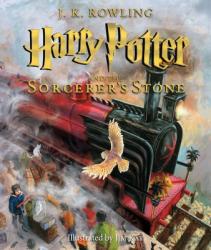
For people who want to enjoy an intriguing, fast-paced novel, Harry Potter and the Sorcerer’s Stone is the perfect book to read. It keeps you involved throughout the book as most chapters have cliffhangers at the end. This novel is the first of the seven famous Harry Potter books by J.K. Rowling.
The book is about 11-year-old Harry Potter, who receives a letter saying that he is invited to attend Hogwarts, a school of witchcraft and wizardry. He then learns that a powerful wizard and his minions are after the sorcerer’s stone that will make this evil wizard immortal and undefeatable. Harry decides to go after the sorcerer’s stone before the wizard reaches it, but his loyal friends, Hermione and Ron don’t let Harry face this danger alone.
This book is full of fantasies and imagination like at one point, Harry Potter is asked to catch a flying golden ball while flying on his broomstick. Eventually Harry Potter stands on his broomstick and tries to reach for the ball, but he falls off the broomstick in a very tense moment. He unexpectedly throws up the golden ball winning the game for his team.
Harry Potter and a Sorcerer Stone is a good book to spark joy and imagination for anyone, regardless of age. But I would say it is most enjoyable for elementary school students, who can very well relate to the fantasy world. So I would say that it is a must-read for younger audiences, but it’s a good read in general.
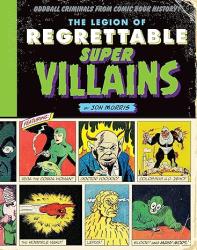
With the success of comic book movies in the last decade, it's sometimes hard to forget that these films don't explore all of what the pulpy medium offered. The rise in popularity of comics in a few different "eras" inevitably led to saturation in the medium. When something becomes saturated, creators don't care as much about what they're putting out, since everything sells. This is how a book like The Legion of Regrettable Supervillains can collect quite a few foes that were better left forgotten.
If there's anything this book does well, it's showing how simple and bland the early years of comics were. Perhaps I'm just used to the modern era that's had decades to figure out which superheroes and supervillains work best. Many of the early comic villains are forgettable, indicating a lack of imagination on the part of their creators. Unfortunately, since this book collects a lot of these villains in one place, it is boring to get through. After a few pages of supervillain puns, I got the "joke" this book was trying to make. And it just kept going.
While I understand organizing this book chronologically showed how these regrettable supervillains evolved over the years, I think it might have had more variety if it just stuck to being exclusively alphabetical. After all, it would have kept my attention a little better if I learned about a villain like Lepus before being reminded that M.O.D.O.K. exists. Perhaps my surface-level interest in comic books (especially the classics) is why it took me a while to get through this book. Still, if you want to be a super-fan of this medium, you might already know about Doctor Voodoo, which might make this humorous commentary on him a moot point.
A slightly amusing gimmick that highlights the lack of early comic book creativity, I give The Legion of Regrettable Supervillains 3.0 stars out of 5.
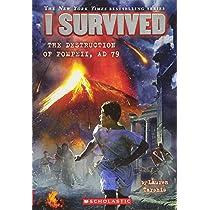
This book is awesome! I love how it is set in Ancient Greece and how Marcus is a quick thinker. I also enjoyed that Tata does not believe in monsters and magic. If you want action and a quick read, this is a great book. They should make this into a movie!
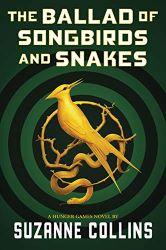
The Ballad of Songbirds and Snakes is a prequel story taking place before the events of the hunger games, and is about president Snow before he becomes president. This book was interesting because it shows Snow as a mentor to a tribute from district 12 during the tenth annual hunger games. You also hear a lot about Snow’s internal monologue which can get a little creepy because some of his actions actually make sense despite them being twisted. The book was a lot longer than any of the original hunger games books so it was a little slow which made it boring at times, but it was interesting to see Snow slowly morph into the twisted and feared villain he is later. The love story in the book was also strange because Snow would be the last person you would think of to show compassion and even Suzanne Collins can confirm this throughout his internal monologue. Overall, I think this is a great book to read if you enjoyed the hunger games series and there is a movie adaptation coming out this November which was one of my reasons for reading it.
Reviewer Grade: 8

We were liars is a young adult drama/thriller. It’s about the seemingly perfect Sinclair family and their summer private island. Cadence Sinclair is the heir to the Sinclair fortune and going to the island during the summers is what she looks forward to during the year. However, after an accident and two summers missed on the island, Cadence returns with little memory and a suspicious feeling.
This was an overall good book to read. It got a little slow at times, but it was not predictable and kept me on the edge of my seat. I will say I was expecting a predictable ending but the plot twist completely blew me away! It’s also not very long and a quick read but with a lot of emotions. E. Lockhart did a good job at making me feel things. I laughed, I cried, and had more than one jaw dropper. I would rate it a 3 just because it got a little boring and confusing, but I would recommend!
Reviewer Grade: 8
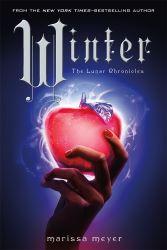
This book was the absolute perfect ending to the Lunar Chronicles! There was so much action and fairytale elements in the book that were all easy to follow, and fun to read! Marissa Meyer was a genius when she incorporated an adaptation of a sci-fi Snow White, while still be able to keep the story flowing and add growth to the characters. It is important to read the series in order, but Winter was by far my favorite in the series!
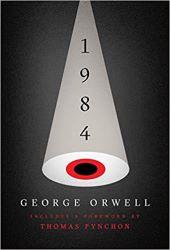
Although George Orwell crafted a rather interesting dystopia, the story he built around it largely fell flat. It was apparent throughout the novel that Orwell was more of an essayist than a storyteller; he was more interested in explaining the structure of his setting to his audience rather than showing them how that structure affects the story. 1984 suffers from hundreds of pages of blunt exposition-dumping that disconnects the reader from the characters and plot. While there is significant payoff at the end, the rising action was rather lacking in weight as the main character spends more time describing the logistics of the 1984 world rather than where he fits in it. Some aspects of Orwell's famous dystopian are intriguing, like the use of Newspeak or the new family dynamics, though it is overall disappointing.
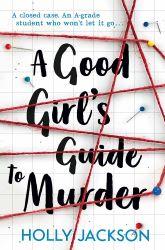
A Good Girl's Guide to Murder presents readers with the skeleton of a mystery novel while somehow excluding most of what makes a mystery novel compelling. Holly Jackson dives straight into the disappearance of Andie Bell at the beginning, ignoring all conventions of suspense of build-up. The disappearance is approached from a strikingly detached perspective, though, in contradiction, many of the key figures in the case are life-long friends of the narrator. This apparent lack of motive from Pippa rocks the very foundation of the novel, and readers have difficulty connecting with such a character. Jackson hastily attempts to patch this by claiming an emotional stake in the matter, but in Pippa's actions, she is all but sensitive. Her investigation is greatly reckless, unrealistic, and absurdly convenient. The mechanical nature of Pippa's progress only further disconnects the reader from the story, and it renders the suspense and climax completely arbitrary.
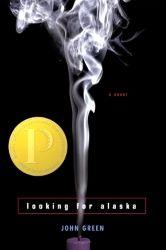
Looking for Alaska details the story of a kid who, in his pursuit of something new and, in the aim of sucking the marrow out of life, fails to recognize the plain truths of the people around him. He is entranced with the interesting world of Culver Creek, the mystical boarding school of his father's youth. He aids his roommate in pranks and grows closer with friends Lara, Takumi, and mysterious Alaska, all the while oblivious to her deep underlying hurt. At its heart, Looking for Alaska is about being blinded by one's own expectations to the point of pushing away important friends. The story itself, though somewhat meandering in its execution, is quite well-written, and John Green portrays a realistic, captivating, and unique cast of characters.

The sole way to describe Demon Copperhead by Barbra Kingsolver is a long, dark coming-of-age narrative. Demon Copperhead, born and raised in the southern Appalachian mountains by a single drug-addicted teenage mother, is seemingly designed for failure the moment he was born. Throughout his childhood, Demon confronts an abusive stepfather, an addicted mother, exploitive fosters, and selfish friends. As he faces a life of mistrust, inadequacy, and poverty, Demon relies on his wits to survive. While the book is lengthy, there is never a dull moment or lull in the plot, and the characters within the narrative are dynamic, adding depth to the story. The writing style effectively lures the reader into the constructed world of Lee County.
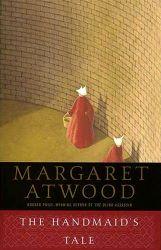
Warning: this book contains depictions of rape and violence. If either of these are sensitive topics for you, I would reccomend finding a different book.
"The Handmaid's Tale" is a story about a country that rises after the fall of America. In it, traditional gender roles are enforced by the government. Women are forced into the role of Wives, Marthas (women who clean the house), Aunts (women who are in charge of other women), and Handmaids (women who have sex with men to give them children). Offred has been taken from her husband and child, put into reducation, and forced to be a Handmaid for a commander. She makes her way through the new world while trying to keep fragments of her sanity, individuality, and happiness.
The descriptions in this book are incredible, almost poetic. The charcters in this book are all well defined, and feel like real people. Offred was a standout to me. Though she is the hero in the book, there's an inherent selfishness in her character. She has an affair with a married man. She decides not to help the resistance. She constantly mocks a woman who has been raped. Oftentimes stories will try to make a dystopia seem worse by making their protagonists innocent and pure. By making Offred so flawed, it draws attention to the fact that this treatment is unacceptable no matter who it's being done to.
The worldbuilding of Gilead is haunting. Margret Atwood has said that everything she put in "The Handmaid's Tale" has happened in history somewhere. That's probably part of why this book feels so real. Though it might seem unbelievable that a society could collapse and revert to such archaic values, looking into real life societal collapses makes it seem much more feasible.
I could talk about this book for far longer, but that would be unwise. In summary, "The Handmaid's Tale" is a wonderful, if not unsettling, read. I would reccomend it to fans of speculative fiction, anyone interested in learning about gender equality, and anyone who can handle a thought provoking read. As I said in the beginning though, this book can be upsetting at parts, so judge for yourself if you can handle that.
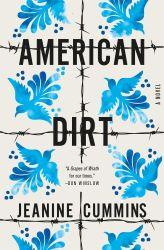
Against all odds, Lydia and her son, Luca, survive a brutal cartel massacre, leaving them with only one option: to embark on a dangerous and arduous journey to seek safety in the United States. American Dirt by Jeanine Cummins is a harrowing story about the survival, resilience, and hope of migrants fleeing north to the United States. Cummins skillfully captures the hardships, fears, and hopes of these characters, providing a window into the harsh realities faced by those making the perilous trek north. American Dirt humanizes the migrant experience by creating empathetic and multifaceted characters, illustrating the diversity within the migrant community and their shared aspirations for a better future.
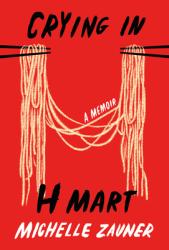
Ever read a book that made you physically hungry? For me, that book is Crying in H Mart, a beautifully written memoir of loss and cultural identity mended together with the power of food and memory: the author, Michelle Zauner, a half-American half-Korean, struggles to navigate her cultural identity. Throughout the memoir, Zauner delves into her childhood memories, the times spent in Korea with her family, and the lasting influence of her mother's teachings. Her descriptions of traditional Korean dishes, their preparation, and the emotions tied to them are not only mouthwatering but also serve as a metaphor for the soul-stirring nostalgia she seeks to preserve. It is a book that stays with you long after the last page, reminding us of the preciousness of family, culture, and love.
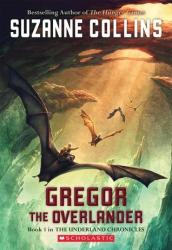
I read this book during middle school and recently reread the series. The book is about a boy named 'Gregor' Gregor falls into a laundry shoot with his sister and finds himself in a new world with a quest. He searches for his dad. He's learns to survive in this new environment picking up new skills and learning this new worlds rules.
I loved the idea of the 'Underland' a world with completely different creatures and how they interact with each other. I loved the story filled with giant animals like bats, rats, and cockroaches. How it goes into detail how Gregor and the people of the Underland get around in the dark. And how the lack of light affects their appearance. The book is very detailed and the well thought through.
The book is definitely worth a read. This book is a part of a 5 book series. Each book provides a new challenge for Gregor. And the last book just leaves you wanting more
Reviewer grade: 11
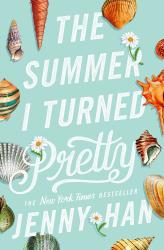
With this book series becoming a show, I was interested in reading the books, and I am glad that I did! These books follow a young girl named Belly who grows up with family friends at their beach house. The series tells the story as they all get older, and their bonds that break and grow back together. It is a comfort book that I would definitely recommend. I would recommend this book to young teenage readers, about 14+. I gave this book a rating of 4 stars because the characters were beautifully written, with you learning something new about the characters each time you turned the page. I personally enjoyed some of the flashbacks in time that detail when Belly was a kid at the beach. It has a sweet comforting feeling. I did not give this book 5 stars because it did take me a bit longer to read since there weren't many twists or turns that kept me super intrigued. At least not in the first book, but in the last two books the drama, and romance definitely keep you interested. If you are looking for a slow-burn comfort romance series for young readers, this is the book/series for you!

I loved this book! The detail in these stories was terrific and made the book a lot easier to follow. The story was entertaining and kept you on the edge of your seat at some parts. My only dislike about this story is that in the beginning of the book when Patroclus is naming all of the different Greek gods and demigods and such, so many names did get a bit confusing. It was a bit hard to follow but only lasted for about the first chapter and was an easy read after that. I rated this book 5 stars because the Greek mythology base in the story was very interesting, and you grew to love the characters as you read it. It made me smile, laugh, and cry. Genuinely a great book. In my opinion, this book is meant for young adult readers, I would say 15+ in my opinion. It does contain some violence but nothing too graphic and one brief sexual content scene but does not go into much detail. Would definitely recommend it!